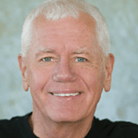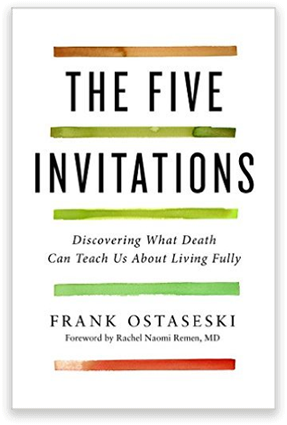For me meditation is about learning to be intimate. Learning to listen intimately to ourselves and the world around us. It’s not just about being more focused or attaining some special transcendent state.
It’s about freedom and learning to live and act with some degree of wisdom, compassion and love. It enhances my ability live life more fully.
Mindfulness is a straightforward enough word. It means the mind is fully attending to what is happening, to what you are working on, to the person you are listening to, the surroundings you are moving through. It is a basic human capacity.
Yet it is often elusive. Our mindfulness can slip away in an instant. We get lost in distraction, caught up in obsessive thoughts, consumed by worry, planning, fantasizing, comparing or judging. Even in the midst of activities that we love, like eating a great meal, or being in nature or having sex, mindfulness seems to evaporate. It slips away and we find ourselves living in our story rather than our direct experience. Mindfulness is simple but it’s not easy.
Many years ago, I was invited teach meditation at my daughter’s Catholic school. I was to meet with several eighth-grade religion classes over the course of a day.
When the first class arrived, I asked them to settle into their seats, close their eyes and begin to focus their attention on the breath. I proceeded to offer fairly traditional meditation instruction.
It went over like a lead balloon. There wasn’t a single question or comment at the end of the meditation class. With the second class, I knew I would need a different and more engaging approach. I suggested that they begin by arranging their desks into pairs ideally with someone they liked. Then I began the new meditation instruction.
“Today, I would like to teach you how to kiss really well.” The normally apathetic eighth-graders lifted their heads and their eyes got wide as saucers. The teacher in the back of the room looked a bit alarmed and began to clear his throat to get my attention.
I continued, “When you’re kissing somebody you want to be there for the experience. You don’t want the other person looking out the window. You don’t want to be checking your phone for texts.”
“A kiss is an intimate act. At its best, it engages all of our senses. You want to be able to see, hear, smell, taste and touch in ways that are vivid, fresh and alive. Ideally you want to feel your heart fully and observe your mind with curiosity. It’s unlikely you will be able to open to these experiences if you haven’t cultivated the habit of attention.”
As you might imagine the students became much more interested in the meditation. Now, with an inspired intention they were genuinely motivated to engage in the practice.
Word spread through the school that the eight-graders should be sure to attend the religion class taught by a rather unique guest teacher.
Mindfulness is a capacity of mind to collect, gather and attend to given object. Meditation is a way that we cultivate that capacity.
It’s much like going to the gym to keep our bodies fit or showering keep ourselves clean. Mindfulness mediation is good mental hygiene.
Mindfulness is an important aspect of meditation practice, but don’t objectify it. Don’t make it into a big something that you aren’t doing right. Don’t expect magic to happen when you do get it right.
Keep it simple.
When I get up in the morning and brush my teeth. If I don’t I stink. It’s not so different with meditation. If I don’t do it regularly, I stink or at least meet my day and perform my tasks in a habitual way.
Let’s clear up a few misconceptions about meditation that get in the way of practice.
1. Mindfulness doesn’t take more time. Being mindless takes more time. Mindfulness is not time consuming it is time enhancing. It’s not about adding another activity to your life. It’s about bringing more attention to your life
2. Mindfulness mediation isn’t about shaving your head or wearing saffron robes or adapting a religious belief system. Mindfulness Meditation asks that you pay attention to your direct experience and learn from what you observe, feel and sense.
3. Meditation is not a cure-all. Even when we practice mindfulness regularly, we can be insightful about certain aspects of our lives and blind to others. I know experienced meditators who are highly attuned to their bodies, but out of touch with their emotional lives. I know others who understand the mind, but completely ignore their bodies. I can think of longtime practitioners who are able to sit in silence for days, but have limited interpersonal skills. Still others have a universal love for all beings, but are unable to love themselves or others in a personal way.
4. Mindfulness is not just inward looking. It can guide our outward actions. Clear comprehension illuminates how our relationship to our experience can either cause suffering or cultivate wisdom. This enables us to nurture a different, more helpful response the next time we encounter a challenging situation, person, or thought. It helps us to remain calm and grounded when in the midst of an argument with a child, neighbor, boss, or partner; when we confront illness; when we face loss. We can draw on our cultivated tranquility and access a wiser inner guidance.
When we gather our attention onto a particular object or experience and stay with it as it changes, we develop concentration and a certain mental pliancy. The growing stability of mindfulness predisposes us to move beyond superficiality, to penetrate experience and investigate it in order to have a deeper understanding.
The breath invites us to rest, restore, and be revitalized. We unhook ourselves from the daily frenzy and bring into balance the instinctive tendency to fight, flight, or freeze.
The breath invites us into the body. . John O’Donohue, the wonderful, wild Irish poet, once wrote, “We need to come home to the temple of our senses. Our bodies know that they belong . . . it is our minds that make us homeless.” We come home as we sense the breath’s texture, rhythm, and pace, the differing length of each inhale and exhale. With time and practice, we learn to align with the breath and move with it, to allow the breath its own natural depth and flow. Every breath takes us to where we belong. As we relinquish command of it, we gradually feel the breath breathing us. This is good training for releasing control of and understanding how to cooperate with life.
While we might believe otherwise, there is nothing boring about being with breath. When we open to the miracle of the breath and sense directly the process of oxygenation, we appreciate how, through a creative collaboration with our blood, air reaches every cell of our bodies. Every moment is totally new. Each breath is unique, purposeful, and essential to life. I liken it to being with a lover. Breathing consciously, we engage in an exploration, a tender discovery of life. Each breath is alive with wonder. Our minds can’t help but become curious as our hearts fill with gratitude.
—Frank Ostaseski is the founder of the Metta Institute and cofounder of the Zen Hospice Project and author of Five Invitations: Discovering What Death Can Teach Us About Living Fully. www.fiveinvitations.com
Copyright Frank Ostaseski




Leave a Comment